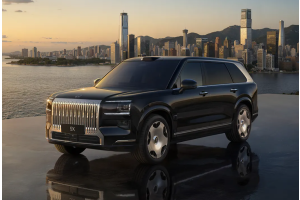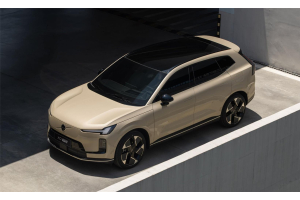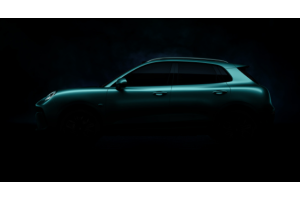Featured
-
October 10, 2025
XPeng Motors Sales Report: 313,000 Units Sold in First Three Quarters of 2025, Annual Target 89.5% Achieved
XPeng Motors has demonstrated remarkable performance in the first three quarters of 2025, with cumulative sales reaching 313,000 vehicles, a staggering year-on-year increase of 217.8%. The company has achieved 89.5% of its annual sales target, ranking first among emerging automotive brands. With only approximately 37,000 vehicles remaining to meet the full-year goal of 350,000 units, XPeng is poised to complete its annual target ahead of schedule.
Key Background and Sales Performance
In September 2025 alone, XPeng sold 41,581 vehicles, indicating that the company could potentially achieve its annual target within just one month. This performance significantly outpaces other emerging competitors in the market.
When compared to other prominent electric vehicle brands, XPeng's target completion rate stands substantially higher. Competitors such as Leapmotor, Li Auto, and Xiaomi have
-
October 09, 2025
Zeekr 9X: China's First Plug-In Hybrid Flagship SUV Challenges Global Luxury Rivals
The Zeekr 9X marks a historic milestone as the Chinese automaker's inaugural plug-in hybrid vehicle and new flagship SUV. Launched on September 29, 2025, this full-size luxury SUV directly targets ultra-premium competitors like the Range Rover and Rolls-Royce Cullinan, blending state-of-the-art technology, extraordinary performance, and lavish amenities.
Pricing and Market Positioning
The Zeekr 9X is offered in four variants with pricing spanning from 465,900 yuan to 599,900 yuan (approximately US$63,965 to US$82,376). A limited-time trade-in promotion provides 10,000 yuan in benefits, effectively reducing the entry price to 455,900 yuan (around US$62,625). The base Max 55kWh model starts at 465,900 yuan (US$65,440), while the Ultra 55kWh and Ultra 70kWh versions are priced at 485,900 yuan (US$68,250) and approximately 499,900 yuan (US$70,350) respectively.
Exterior Design and Dimensions
The 9X introduces
-
September 28, 2025
Great Wall Motor's ORA 5: A New Era in Compact Electric SUVs
Great Wall Motor has officially unveiled the ORA 5, the brand's first pure-electric SUV, on September 25, 2025. This launch represents a significant milestone in GWM's new-energy vehicle strategy and introduces ORA's new globalized numeric naming system, designed to streamline international marketing efforts. Targeting both the domestic Chinese market and global expansion, the ORA 5 emphasizes advanced technology, intelligent driving capabilities, and a distinctive design language.
Essential Specifications
- Dimensions: Length 4,471 mm; Width 1,833/1,844 mm; Height 1,641 mm; Wheelbase 2,720 mm.
- Powertrain: 150 kW permanent magnet synchronous electric motor, paired with a lithium iron phosphate (LFP) battery supplied by SVOLT.
- Performance: Top speed of 170 km/h; estimated CLTC range is expected to be similar to ORA’s Lightning Cat, with potential figures around 555 km (63.87 kWh battery) or 705 km (83.49 kWh battery).
- Charging:
-
September 26, 2025
Dongfeng Nissan's New Teana "Teana PLUS" to Feature HarmonySpace 5 and HUAWEI SOUND, Launching Q4 2025
By TopUsedCars.com reporter Xiao Mi
Dongfeng Nissan has unveiled significant upgrades for its flagship sedan, the Teana, with the new "Teana PLUS" variant. The model is set to launch in the fourth quarter of 2025 and will be equipped with the Huawei HarmonySpace 5 intelligent cockpit system and a HUAWEI SOUND audio system. While retaining the proven 2.0L and 2.0T powertrain options, the Teana PLUS receives a comprehensive overhaul in its exterior design and intelligent features. The pre-sale price is expected to remain in the range of 179,800 CNY to 239,800 CNY.
Key Upgrades and Configurations
Intelligent Cockpit: A Leap Forward
The most notable upgrade is the integration of the HarmonySpace 5 cockpit system. This system enables seamless multi-screen media streaming, voice and light interaction, and features the smart assistant Xiao Yi. The audio experience is enhanced by the HUAWEI
-
September 25, 2025
YANGWANG U9 XTREME (U9X) Shatters World Record, Becomes Fastest Production Car Ever
In a historic moment for the global automotive industry, the YANGWANG U9 XTREME (U9X) has officially claimed the title of the world's fastest production car. This track-focused, all-electric supercar from China has set a staggering new top speed record of 496.22 km/h, surpassing the previous benchmark. Adding to its credentials, the U9X has also lapped the legendary Nürburgring Nordschleife in an astonishing 6 minutes and 59.157 seconds. In a move that underscores its exclusivity, production will be strictly limited to just 30 individually customized units for the world.
Revolutionary Platform and Unmatched Powertrain
The U9X's record-breaking performance is rooted in its groundbreaking technology. It is the first production car in the world built on a mass-produced 1,200V high-voltage platform. At its heart lies a quad-motor setup, with each electric motor producing 555 kW. This combines for a colossal
-
September 22, 2025
Jetour Zongheng G700 Hybrid Off-Road SUV Begins Global Pre-Sales
TopUsedCars.com reporter Xiao Mi - The highly anticipated Jetour Zongheng G700 hybrid off-road SUV officially commenced global pre-sales on September 19, 2025. This premium vehicle is available in four distinct trims, with prices ranging from 349,900 yuan to 429,900 yuan (approximately US$47,945 to US$58,890 at current exchange rates). The G700 combines exceptional off-road capabilities with luxury amenities and cutting-edge intelligent systems, positioning itself as a formidable competitor to established high-end off-road models such as the Land Rover Defender and BYD Yangwang U8.
Key Performance & Specifications
The G700 is powered by the advanced Kunpeng Super Hybrid CDM-O system, delivering an impressive total output of up to 665 kW (896 horsepower) and 1,135 Nm of torque. Some technical specifications indicate slightly lower figures of 560 kW (751 horsepower) and 795 Nm torque, reflecting different measurement standards.
-
September 16, 2025
BYD Unveils Revolutionary e-Bus Platform 3.0 and C11 Electric Bus in Hangzhou
TopUsedCars.com - BYD has officially launched its third-generation e-Bus Platform 3.0 and the all-new C11 electric bus at a major event in Hangzhou, introducing groundbreaking technologies that set new benchmarks in the new energy bus sector. The launch underscores BYD's commitment to leading the global transition toward sustainable public transportation.
Key Technological Innovations
The e-Bus Platform 3.0 introduces several industry-first features designed to enhance performance, safety, and energy efficiency:
- Full 1,000V High-Voltage Architecture: This comprehensive system covers the drive, charging, and HVAC components, significantly improving efficiency and power delivery in electric buses.
- 1,500V Silicon Carbide Power Chips: These advanced chips provide greater power handling and efficiency for core vehicle systems.
- 1,000V Integrated Electric Drive Axle: A world-first innovation in the bus industry that
-
September 10, 2025
CATL Redefines EV Battery Standards with NP3.0 Safety Platform and Shenxing Pro LFP Battery at Munich Event
On September 7, 2025, CATL, China’s leading battery manufacturer, introduced two groundbreaking technologies at its Munich event: the NP3.0 (No Propagation 3.0) battery safety technology platform and the Shenxing Pro LFP battery. These innovations set a new benchmark for electric vehicle battery safety, fast charging, range, and lifecycle performance, specifically targeting the European and global markets.
Key Innovations in NP3.0 Safety Technology
The NP3.0 platform incorporates eight core safety features, including flame-retardant electrolyte, flame-retardant separator, nano-coating on the cathode, cell safety devices, aerogel insulation pads, fire-retardant coating, circuit stabilization, and high-voltage active cooling. This comprehensive approach ensures superior protection against thermal runaway, a critical concern for EV safety.
In extreme scenarios, NP3.0 prevents heat
-
September 02, 2025
ZEEKR 9X Opens for Pre-order at Chengdu Auto Show 2025 as Premium Chinese Luxury SUV Enters Global Market
TopUsedCars.com - The highly anticipated ZEEKR 9X, a flagship luxury SUV from Chinese automaker ZEEKR, has officially opened for pre-orders during the 2025 Chengdu Auto Show. With a pre-sale price range of 479,900 to 569,900 CNY (approx. $65,750–$78,070 USD), the vehicle is positioned as a premium offering in the competitive luxury SUV segment.
Key Highlights of the ZEEKR 9X
Advanced Intelligent Features: The top-tier model is equipped with five lidar sensors, enabling 360-degree perception for enhanced driving safety and intelligence.
Tri-Motor Powertrain and Performance: The ZEEKR 9X features a tri-motor plug-in hybrid system that delivers impressive acceleration, going from 0 to 100 km/h in just 3.1 seconds.
Luxury and Technology Integration: The model includes high-end amenities such as a Naim premium audio system (optional at 85,000 CNY or approx. $11,640 USD), a 48V active
-
August 28, 2025
2025 Chengdu Motor Show: A Grand Showcase of China's Automotive Innovation
The 2025 Chengdu Motor Show is set to take place from August 29 to September 7 at the Western China International Expo City. This highly anticipated event will feature nearly 120 automotive brands, showcasing over 1,600 new vehicles across an expansive exhibition area of 220,000 square meters. Recognized as one of the most significant automotive events in the second half of the year, the Chengdu Motor Show offers a comprehensive overview of the latest trends and innovations in the Chinese auto market.
Spotlight on Key Models
According to frontline reports from TopUsedCars.com correspondent Xiao Mi, ten standout models have already been spotted at the event. These vehicles span a wide range of categories and price points—from budget-friendly electric city cars starting at around 60,000 CNY (approx. 8,030 USD) to intelligent, rugged SUVs priced at about 300,000 CNY (approx. 40,000 USD).
Family Essentials: High-Value





